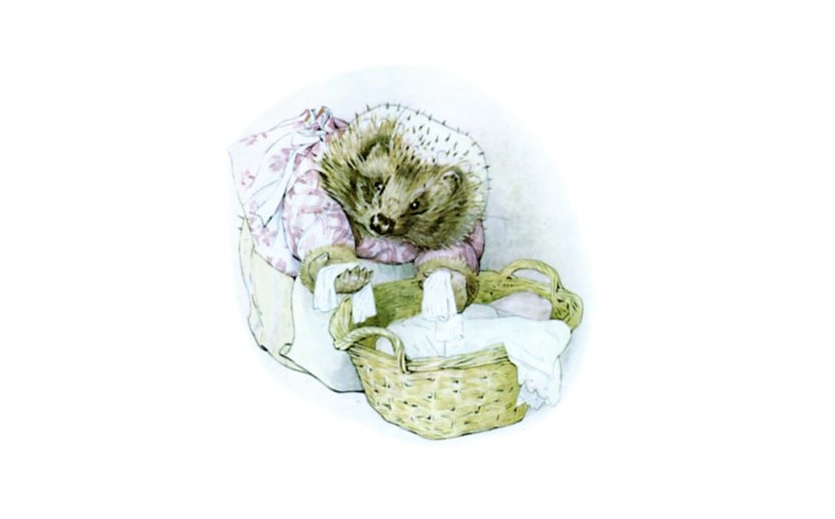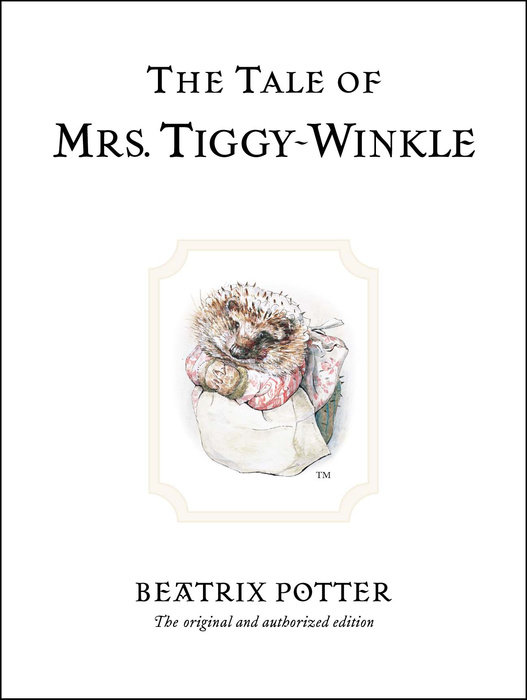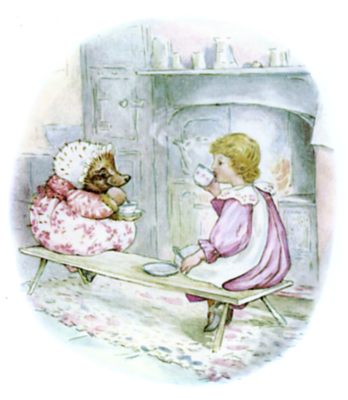
We’re about to read The Tale of Mrs.Tiggy-Winkle by Beatrix Potter, that classic author of British children’s literature. My generation, which grew up in the early 80s in the USSR is familiar with the story thanks to a record that featured a musical play based on the book. I’m sure many of us can easily recall the heroine’s song to this very day. The story itself is over a hundred years old. Will today’s preschoolers understand the everyday terms of those times, when washer-women and clear-starchers were still around?

The confusion starts from the very first page. Why, for example, does little Lucie need a pinny? “So she doesn’t get dirty?,” the kids suggest. Yes, but why this separate item of clothing? Why not just wash your dress if it gets dirty? The kids can’t come up with anything. The moms help out: “They didn’t have washing machines back then! They washed the clothes by hand, in cold water!” All right, now it’s clear: washing a pinafore, which is like a little apron, is much easier. We read a little further and get stuck again. Lucie’s lost her pocket-handkerchiefs. Who carries cloth handkerchiefs around anymore? “I do…,” the grandfather of one of the children admits sheepishly. The rest of the audience looks at him with surprise. But these unfamiliar everyday details don’t worry the kids too much. In any case, they feel for their new little friend who’s lost something.
Lucie runs along the path and sees a door in the hill. From inside she hears a song:
Lily-white and clean, oh!
With little frills between, oh!
Smooth and hot-red rusty spot
Never here be seen, oh!
The girl knocks and comes in. The author asks the reader: and what do you think the was inside the hill? The kids guess: “A raccoon!... Maybe things to wash with—basins or something like that?” They’re only a bit off: it’s a “a nice clean kitchen” with a very low ceiling. There by the ironing board is a “very short stout person” whose “little black nose went sniffle, sniffle, snuffle, and her eyes went twinkle, twinkle; and underneath her cap...that little person had PRICKLES!” And so we meet the heroine.
What could possibly be interesting about sorting clean laundry and discussing stains? Yet the children listen closely as the characters pore over Jenny Wren’s tablecloth, a pair of stockings belonging to Sally Henny-penny, and old Mrs. Rabbit’s hankersniff. The cozy world of Beatrix Potter’s anthropomorphic animals unfolds before us. Even Lucie’s pocket-handkins and pinny turn up.
Once again we stumble upon the mysterious: the laundry, already washed, is soaked in a basin, to which Mrs. Tiggy-Winkle adds “starch.” What’s that for? “So the clothes get clean?” the children guess. It’s clear they have never seen anybody starching. The moms step in again: “So the clothes stiffen up and hold their shape!”
Finally, all the clean things are sorted, and the heroines sit down to tea. “They sat before the fire on a bench and looked sideways at one another.” Lucie sits a little further back—there are, after all, sharp hair-pins sticking out from Mrs. Tiggy-Winkle’s gown and cap. Once they’ve had their fill of tea, Lucie and Mrs. Tiggy-Winkle come out onto the path and hand the other animals their clean, ironed clothes. But when Lucie wants to wish Mrs. Tiggy-Winkle good-night, the washer-woman suddenly runs off up the hill, this time without her clothes. “HOW small she had grown— and HOW brown—and covered with PRICKLES! Why! Mrs. Tiggy-winkle was nothing but...”
“A hedgehog!,” say my listeners in unison.
We discuss Mrs. Tiggy-Winkle’s personality, trying to decide if she’s strict. The children agree that she isn’t: “No, she’s nice!” Prickly Tiggy-Winkle is like a stuffed animal, her prickles don’t seem real, they don’t scare the kids in the least.

Image: gutenberg.org
It’s a soothing story. There’s no drama and all the events and transformations are clear to a very small child: what was dirty became clean, what was lost was found, what was sent off to the wash came back. The little girl who went off on a walk came home, and she who started out messy became neat. It’s all simple and familiar. The fact that animals wear clothes and talk to one another makes absolute sense to the small child for whom everything is anthropomorphized.
In Beatrix Potter’s world, cutesy names and a gentle preachiness come naturally, happy ends abound, and anything that is started is successfully completed. It’s bliss.
In spite of the old-fashioned activities depicted in the story, even today’s little reader will sense and appreciate the book’s warmth.
Maria Klimova
Translated from the Russian by Alisa Cherkasova
Cover image: gutenberg.org
Book cover image: penguinrandomhouse.com
Follow us on Facebook.
